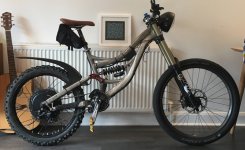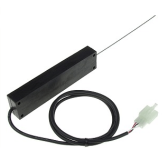thunderstorm80
1 kW
- Joined
- Mar 29, 2016
- Messages
- 383
I am message number 1000 on this thread!!!!!! 



Well, what I wanted to ask is about the upper voltage cut.
I am running a system of 3.3*25 = 82.5V 20Ah A123 prismatic cells. (3.6V@cell fully charged for a total of 90V, but I do not charge them more than 3.5V@cell)
The highest upper voltage cut on the Phaserunner is 90V. It seems that if the pack has not been discharged enough, the regen can cause the voltage (as seen by the Phaserunner when including resistance drops) to rise a bit above 90V.
When it does, it causes a high-voltage fault where you need to clear it or restart the controller.
This brings two questions:
1. I thought the regen-voltage was supposed to roll-off as you approach the highest voltage limit and not overshoot.
2. Is there a way to make the controller just show a warning and temporary shut-off/roll-off the regen, just like the Grinfineon does, instead of entering fault mode? This is very dangerous when you rely on regen during a steep downhill. (along with the mechanical brakes of course)
Well, what I wanted to ask is about the upper voltage cut.
I am running a system of 3.3*25 = 82.5V 20Ah A123 prismatic cells. (3.6V@cell fully charged for a total of 90V, but I do not charge them more than 3.5V@cell)
The highest upper voltage cut on the Phaserunner is 90V. It seems that if the pack has not been discharged enough, the regen can cause the voltage (as seen by the Phaserunner when including resistance drops) to rise a bit above 90V.
When it does, it causes a high-voltage fault where you need to clear it or restart the controller.
This brings two questions:
1. I thought the regen-voltage was supposed to roll-off as you approach the highest voltage limit and not overshoot.
2. Is there a way to make the controller just show a warning and temporary shut-off/roll-off the regen, just like the Grinfineon does, instead of entering fault mode? This is very dangerous when you rely on regen during a steep downhill. (along with the mechanical brakes of course)




